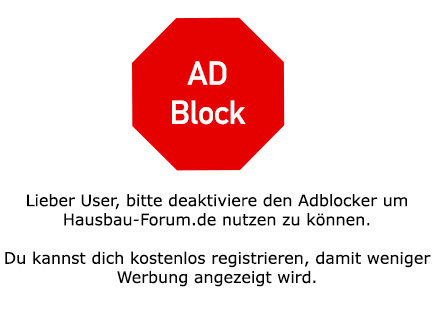Sunnx
2014-04-29 14:25:40
- #1
Hello everyone,
yesterday we had an initial informative conversation with a solid house provider. Of course, we always ask where the respective provider sees HIS advantage compared to other construction methods. He couldn’t answer that precisely yesterday; he rather made an effort to present arguments against prefabricated houses in timber frame construction.
In any case, he also said that most of the moisture enters the house with the screed, so it doesn’t matter whether you build stone on stone (and thus expose yourself to weather risk) or erect the shell for a prefabricated house within a very short time. The screed has to be laid on site in any case and then dried.
You often read that an advantage of prefabricated houses is the dry construction method in the hall, but is that actually relativized again by the screed?
I am grateful for all answers and thoughts on this
Best regards,
Sandra
yesterday we had an initial informative conversation with a solid house provider. Of course, we always ask where the respective provider sees HIS advantage compared to other construction methods. He couldn’t answer that precisely yesterday; he rather made an effort to present arguments against prefabricated houses in timber frame construction.
In any case, he also said that most of the moisture enters the house with the screed, so it doesn’t matter whether you build stone on stone (and thus expose yourself to weather risk) or erect the shell for a prefabricated house within a very short time. The screed has to be laid on site in any case and then dried.
You often read that an advantage of prefabricated houses is the dry construction method in the hall, but is that actually relativized again by the screed?
I am grateful for all answers and thoughts on this
Best regards,
Sandra
